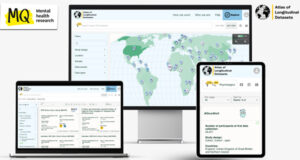
December is a month of transition, as many communities across our country make the shift from cool, bright autumn days to longer, colder nights. As we busily prepare for upcoming meals and seasonal celebrations with friends and family, it is an apt time to reflect on what home means to us. Protection from the elements, a place to store our treasures and life’s necessities, a site of belonging and being with the people we love, somewhere soft to lay our head each night, and a place we can return to ourselves day after day – home can mean so much.
December 21 marks the winter solstice – the longest night of the year – and National Homeless Persons’ Memorial Day. This is a somber time to reflect and a time to act regarding the pervasive problem of housing loss faced by more than 1 million American adults and children each year. On this day, groups nationwide hold vigils and memorial services to remember the many people who have lost their lives without a place to call home. There are many ways that one can become homeless – none of us is immune – but chief among them are affordable housing scarcity and wages that are not keeping pace with mortgages, rents, and the overall cost of living. By increasing access to behavioral health prevention, treatment, and recovery support services, the Substance Abuse and Mental Health Services Administration (SAMHSA) plays a critical role in stabilizing and strengthening the resilience of those at risk of or currently experiencing homelessness. As Chair of the US Interagency Council on Homelessness, US Department of Health and Human Services Secretary Xavier Becerra has emphasized how stable housing is essential to the health—including the behavioral health—of individuals and families.
Approximately 1.4 million people, or one in every 130 households in America (PDF | 3.1 MB), stay in a homeless shelter program over the course of a year, according to the U.S. Department of Housing and Urban Development (HUD). An estimated 256,610 people were experiencing unsheltered homelessness (PDF | 18.6 MB) as of HUD’s point-in-time count at the end of January 2023. These are the many Americans who sleep on sidewalks, in abandoned buildings, at bus stations, and in other spaces not meant for human habitation. This doesn’t include the many other individuals and families who are couch surfing or doubled-up with family or friends. In addition, nearly 9 million renter households in America are at risk of homelessness (PDF | 3.1 MB) because they have very low incomes, do not receive housing assistance, and are living in severely inadequate housing, paying more than half of their income on rent, or both.
While not the primary drivers of homelessness, mental illness and substance use disorder are commonly experienced among people who are unhoused, and especially those not staying in any form of shelter. Injury, illness, and premature death are all more likely to befall people who have nowhere to live. Experiencing homelessness can also worsen symptoms of mental illness and substance use disorder. Without a stable home, it’s difficult for people to engage in health-promoting activities – such as storing and taking medications, cooking healthy meals, or getting adequate sleep. Meeting basic survival needs such as eating, bathing, or finding a toilet can become persistent and distressing daily obstacles.
Criminalizing homelessness by ticketing, arresting, or jailing people for sleeping in public spaces can perpetuate a damaging jail-to-streets cycle, because having a history of incarceration makes it more challenging to secure housing, and because imposing fines on people who are already living in deep poverty only places housing further out of reach.
It doesn’t have to be this way
Homelessness is preventable. It requires a cooperative, comprehensive approach from a wide range of partners, including people with lived experience of homelessness and housing instability. Cross-sector partners might include government agencies, homeless and housing service providers, philanthropies, legal services organizations, medical and behavioral health providers, and a range of other organizations addressing homelessness locally. Together these partners can use data to tailor specific housing resources to local needs while broadly investing in methods for helping people stay in their homes or settle and stabilize in new ones.
For people who are already experiencing homelessness—including those who have mental illness or substance use disorder—a variety of approaches are known to be helpful. The first, of course, is housing. Successful recovery from any health condition is most likely when a person has a safe, stable place to live.
Supportive services, such as case management, assistance applying for benefits (including Supplemental Security Income/Social Security Disability Insurance, or SSI/SSDI), and supported employment all help someone achieve stability. Specialized medical outreach teams or other mobile care teams go where people are, offering supports for behavioral health needs. That might mean educating someone about overdose prevention, connecting them to therapy or psychiatry, getting them started on medication for their substance use disorder, offering peer support, or a range of other services. The key is to build relationships with people over time and to affirm that people have a voice and choice over the services and support they receive.
When planning for community services for individuals with mental illness, substance use disorder, and/or homelessness, it’s critical that people who have lived or living experience are included in decision making and as members of treatment teams. Such involvement can help build trust and connection with those receiving services and promote more responsive behavioral health and housing services.
Taking action for those who are experiencing homelessness
As we prepare for the winter, let’s turn our collective attention to those who remain unhoused. Here are some specific things you can do:
Resources for local governments and community-based organizations
If you work for an organization that serves people who are unhoused, SAMHSA and other federal agencies have developed a wide range of resources that may be of support to you as you plan and implement your programs. Some of those resources include:
SAMHSA grants focused on reaching people experiencing homelessness
Finding help in a crisis
Finally, if you or someone you care about is experiencing homelessness or the threat of housing loss, with or without concurrent mental health needs or substance use disorder, here are some specific resources to consider:
- HUD: Find your local Public Housing Agency or find other housing assistance.
- Other housing resources, including information about eviction and foreclosure, home repair assistance, and filing complaints against landlords.
- FindTreatment.gov (Español), a confidential and anonymous online resource for people seeking treatment for mental and substance use disorders.
- FindSupport.gov (Español) is an online guide that helps people navigate through common questions when they are at the start of their journey to better behavioral health.
- SAMHSA’s National Helpline, 1-800-622-HELP (4357), a free, confidential, 24/7, 365-day-a-year treatment referral and information service (in English and Spanish) for individuals and families facing mental and/or substance use disorders.
- 988 Suicide and Crisis Lifeline: If you or someone you know is struggling or in crisis, help is available. Call or text 988 or chat at 988lifeline.org.
- If you are a Veteran who is homeless or at imminent risk of becoming homeless, call the National Call Center for Homeless Veterans at (877) 4AID-VET (877-424-3838) for assistance.
- Disaster Distress Helpline: 1-800-985-5990




